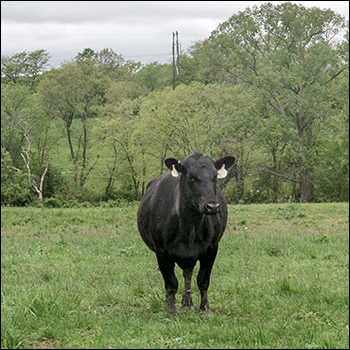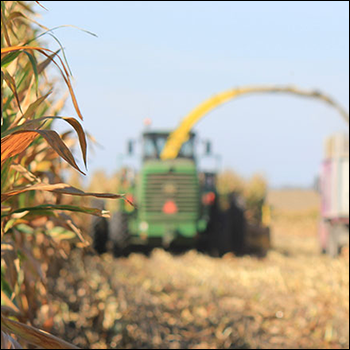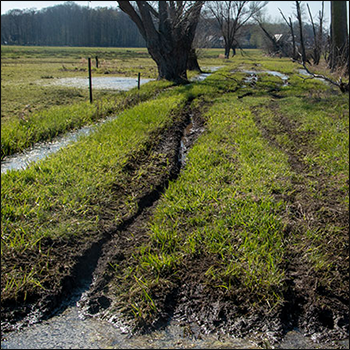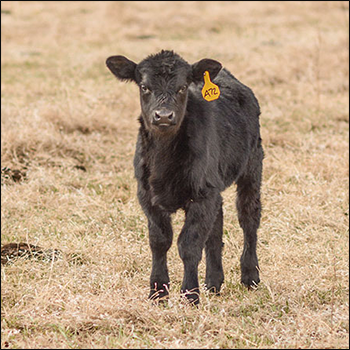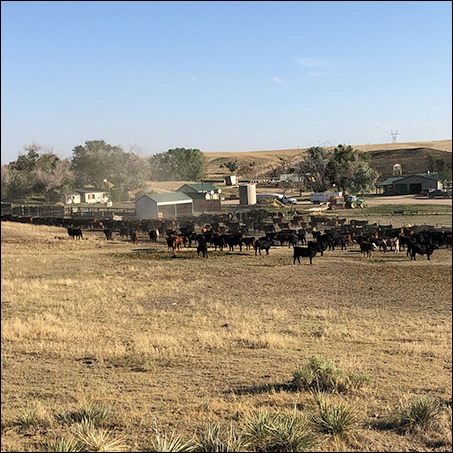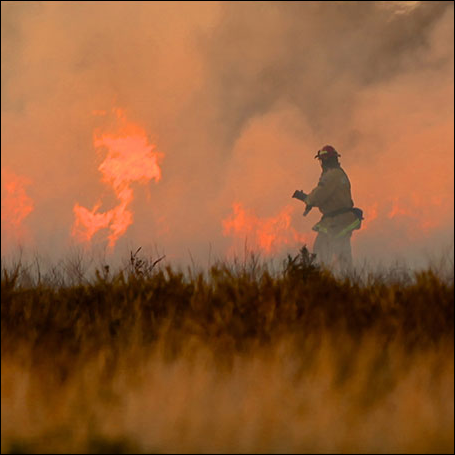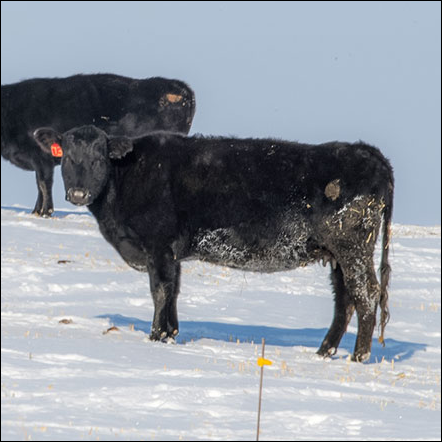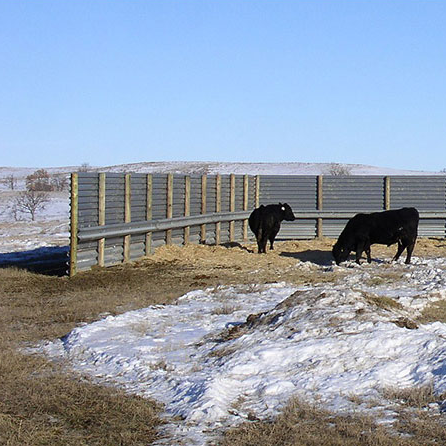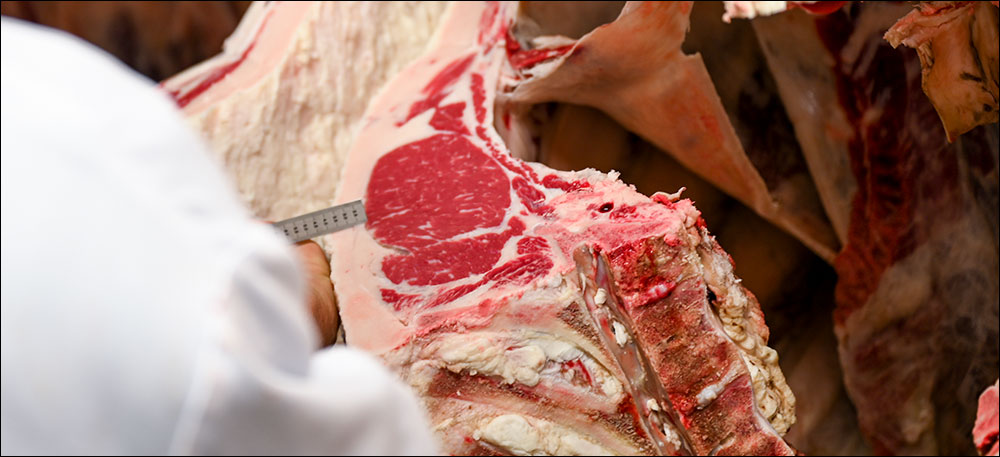
Develop Your Game Strategy
Understand grid marketing, open doors to big premiums.
Learning to ski or play chess in later life is neither easy nor impossible. Marketing finished cattle on a grid is like that. It isn’t intuitive, but it is learnable.
Cattlemen who would increase net returns first see the annual patterns when supply and demand align with seasonal premium spikes and valleys for high-quality cattle. Grid marketing represents a way to capture more net return by similarly aligning genetics, management and performance.
“Maintaining ownership of those cattle through the cattle feeding period in the feedyard and selling on the rail is an opportunity to recapture the input costs and hopefully improve our bottom line,” said Paul Dykstra, Certified Angus Beef® (CAB®) assistant director for supply management and analysis.
At a January webinar, he shared the ins and outs of grid marketing and how to use carcass data to guide management decisions.
Value drivers
Knowing what drives value at the end of the supply chain can direct targeted genetic pressure in the cow herd. For example, backfat and marbling have differing value implications at the packing plant and can be selected in different directions in the herd.
“For those raising replacement heifers, I understand the need for cow longevity and how fertility is impacted by total body fatness and lean muscle content,” Dykstra said. “In terms of terminal traits, less backfat and more marbling are ideal.”
Prime beef production is at a record high, while the Select grade’s share continues to decline (see Table 1). That’s because consumers are paying to keep high-quality beef on the table.
Grid marketing 101
Industry averages for quality and yield grades tell cattlemen if they are reaching for above- or below-average goals.
Fed cattle sell mainly by formula, contract or spot-market bids. Live or carcass weight-based pricing formats are most often region-dependent.
Grid marketing sets a starting price according to a carcass-value base, and then adds premiums and deducts discounts to each carcass. Overall yield, expressed as dressing percentage, converts live to carcass price, Dykstra said.
“The average dressing percentage of 63.5% is pretty standard for the industry,” he said, while noting some grids use minor variations.
Dressing percent is affected by:
- mud;
- gut fill;
- external fat;
- muscling;
- gender; and
- age.
“It’s something we need to pay attention to and know the factors that impact it,” Dykstra said, noting a carcass can overcome a poor dressing percentage by having better-than-average carcass premiums.
Usually, cattle with the most external fat also have the poorest red-meat yield, he added. “That combination works against us.”
Packers pay the most for Prime, Yield Grade (YG) 1, “which are very scant in nature,” Dykstra said.
Conversely, there are big discounts for those at the opposite end of the grading table (see Table 2).
Selling cattle on a grid means competing with the average percent Choice at the packing plant. While graded individually, packers look at entire load-lot averages to determine if any cattle will receive a premium.
The current U.S. average of near 70% Choice, with regional differences, means packers only pay the Choice premium for the share of cattle in the whole lot that exceed that plant average, Dykstra explained.
“Whether it’s 40 head or 150 head, the percentage of those cattle grading Choice matters,” he said.
The Choice-Select spread points to supply and demand for high-quality carcasses and determines the premium.
An average of 70% Choice leaves a potential 30% to capture premiums. If the Choice-Select spread is $10 per hundredweight (cwt.), multiply 10 by 30% to get $3 per cwt. So every Choice carcass in the load will get a $3-per-cwt. premium.
Those seasonal trends make spring and fall typically the best times to capture the most premiums for quality in grid marketing, Dykstra said.
CAB carcasses averaged a 36% acceptance rate from eligible black-hided cattle last year. Seasonality still plays its role. However, Dykstra pointed out that packers have lately paid higher premiums for the brand, incentivizing more than when supplies were historically low.
“That’s a trend that we like to see a lot,” he said. “When we can sell more product and still keep a premium up there for cattle, that’s a great thing.”
Yield grade matters
Yield grade is the other part of the equation.
Cattle reach their end point faster today than 20 years ago, inevitably increasing the average yield grade. Last year, YG 4s averaged 12%. That may seem modest, Dykstra said, but he noted cases of 20%-40% overfat cattle.
The pandemic hasn’t helped yield grades, with cattle feeders and packers working through the backlog as cattle spent more time on feed than anticipated.
While grids may incentivize YG 1s with a recent average premium of $5.43 per cwt., YG 2 is a more reasonable target to maintain high-grading carcasses, he said. YG 3 is par.
The undesirable YG 4s and 5s now incur smaller discounts than in the early 2000s, he said, “evidence that packers have become more accustomed to a little extra fat thickness to achieve a desired quality grade.”
“The premium for YG 2s averaged $2.42 per hundredweight last year,” Dykstra said. “I think we should have as many YG 2s as we can possibly get, keeping in mind that YG 1s with appropriate finish are difficult to achieve.”
Bring the data home
Dykstra posed the questions: How do commercial cattlemen pursue their share? What numbers need to be achieved to make some money in grid marketing?
Start by evaluating the traits in your cow herd and bull battery.
Backfat thickness indicates days on feed and total body fatness, while marbling affects quality grade — also the primary driver for carcasses qualifying for CAB. Backfat, hot carcass weight and ribeye area are other measures used to determine YG and CAB eligibility, Dykstra said.
The many moving pieces in grid marketing make it a bit of a chess game, but learning how to play opens more opportunity for big wins.
Editor’s note: Morgan Marley Boecker is a producer communications specialist for Certified Angus Beef LLC. Access the “Understanding Grid Marketing & Carcass Data” webinar at https://www.cabcattle.com/webinars/.


